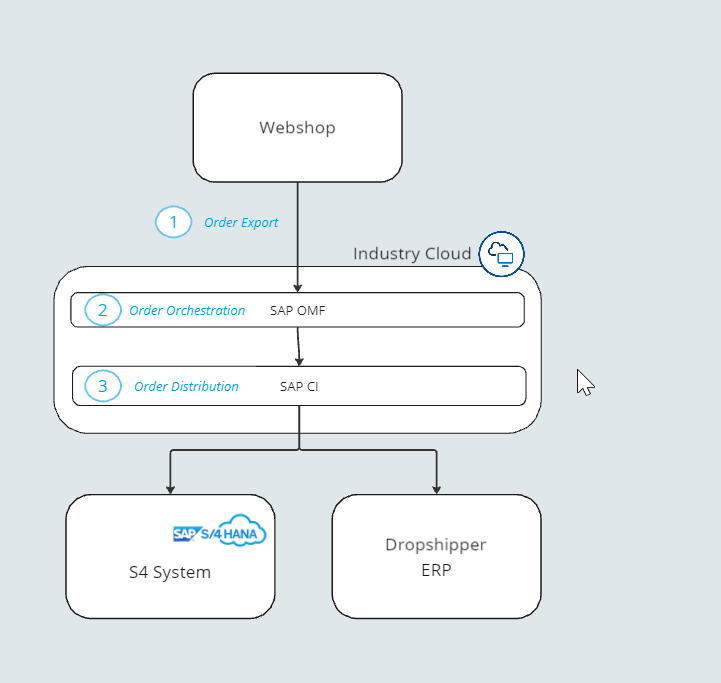
André Dotzler

Henning Sanders
Introduction
The Order Management Foundation (OMF) is another key product in SAP’s Industry Cloud landscape, complementing SAP OMSA. But what exactly does OMF stand for, and what are the benefits of implementing this system?
In our article series “SAP OMF – SAP’s Order Orchestration Tool”, we share insights from our customer projects, starting with an introduction to the tool in the first article.
Wondering what SAP OMF and its core features are? We’ll explain the functionalities of this cloud system using real-world examples, putting its applications into context.
What are the core features of SAP OMF?
SAP OMF (Order Management Foundation) is a product situated within the SAP Industry Cloud. It offers several key functions:
- A comprehensive overview of all sales orders, with access to order details and statuses via AI.
- Distribution of sales orders to the corresponding fulfilment systems, e.g. S/4HANA or an ERP system used by a dropshipping partner.
- Capabilities to create custom validation rules and extensions before orders are processed, such as credit checks or integrations with payment service providers.
- Order status management.
- Integrated sourcing of goods via SAP OMSA.
What business needs does SAP OMF address?
“Omnichannel” is a core term for companies in the retail sector.
Customers expect to have the option to purchase products across various channels. Omnichannel sales are becoming increasingly important, with companies using various online platforms (Amazon, Zalando, eBay, etc.) alongside their own webshops to reach more customers. Many retailers also use their own webshops and expand their product portfolios with items that aren’t shipped directly by them, known as dropshipping.
This is where OMF comes into play. It serves as a central hub for all these orders. Orders that aren’t shipped directly can be identified and forwarded to the dropshipping partner system within OMF. This simplifies the integration of these partners and eliminates the need for each dropshipping partner to create a separate interface for S/4HANA.
What integration options does SAP OMF offer?
SAP OMF resides in the Industry Cloud and can be accessed via APIs. Forwarding and distribution are managed through the SAP CI environment, which uses iFlows. These iFlows can be customized, allowing for changes and custom developments outside the S/4 system. Since SAP OMSA is also cloud-based, integration can be easily handled through a dedicated iFlow, which can be tailored to your requirements.
To recap
SAP OMF provides a comprehensive solution for retailers looking to manage their sales across various fulfilment systems. It allows you to orchestrate order processes in a customizable manner and directly forward sale orders to dropshipping partners. Additionally, OMF’s status management feature ensures transparency for end customers, making it a valuable tool for retailers.
Interested?
Interested in learning more about SAP OMF? Get in touch with us to find out more.
SAP OMF (2) – Receipt of orders
In this article we’ll explore what information needs to be provided by the Order Capture System, such as a webshop, and discuss the additional capabilities SAP OMF offers for integrating and sharing custom data.
SAP OMF (3) – Orchestration within SAP OMF
Orchestration is one of the key features of SAP OMF, allowing fulfilment requests to be sent to fulfilment systems based on user-defined criteria.
SAP OMF (4) – Outgoing messages from SAP OMF
In the fourth part, we’ll focus on how orders exit OMF and are created in S/4HANA. Those are sent via SAP CI where the mapping will also take place.
SAP OMF (5) – Integration OMSA with OMF
In this article, we’ll take a closer look at the interaction between SAP OMF and SAP OMSA which enables an integrated sourcing of incoming orders.
SAP OMF (6) – Customer and product master data
Within this article we look at the non mandatory customer and product master data upload to OMF including the functionalities which are coming with it.



